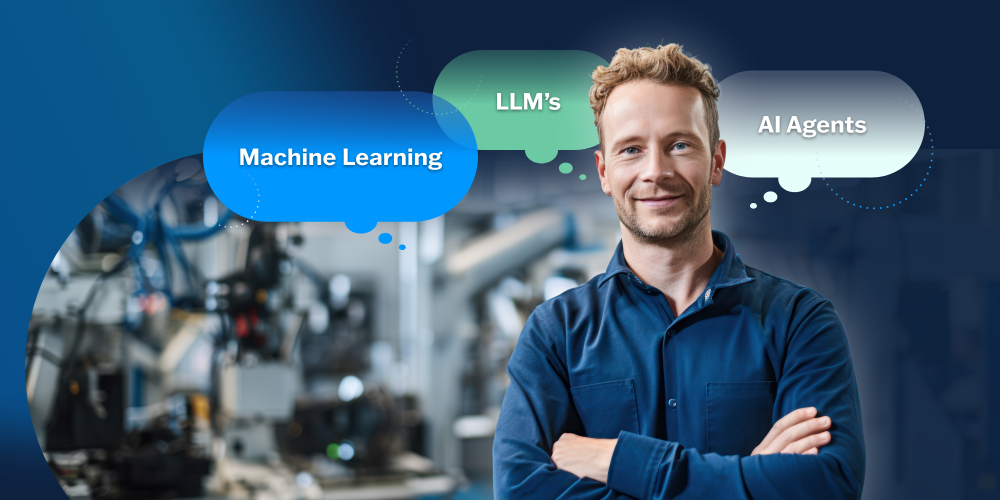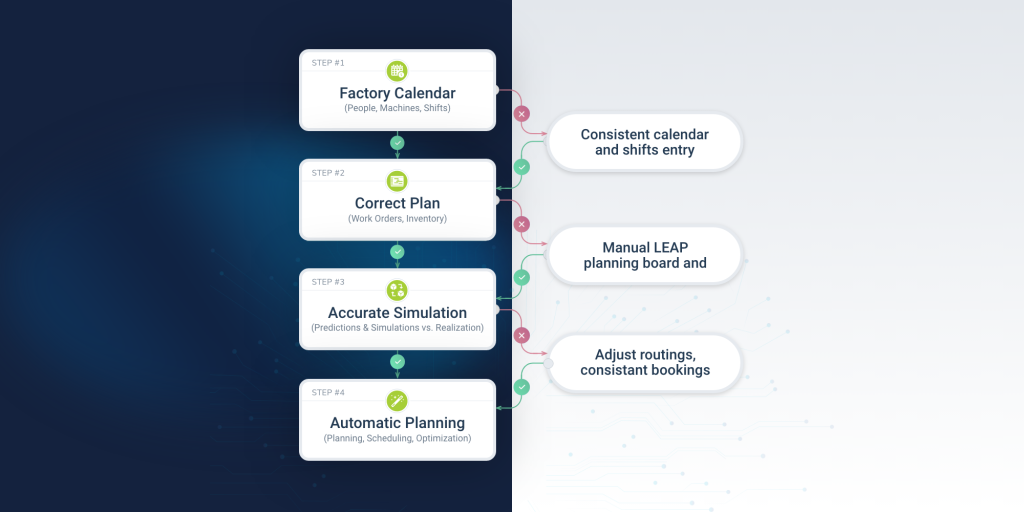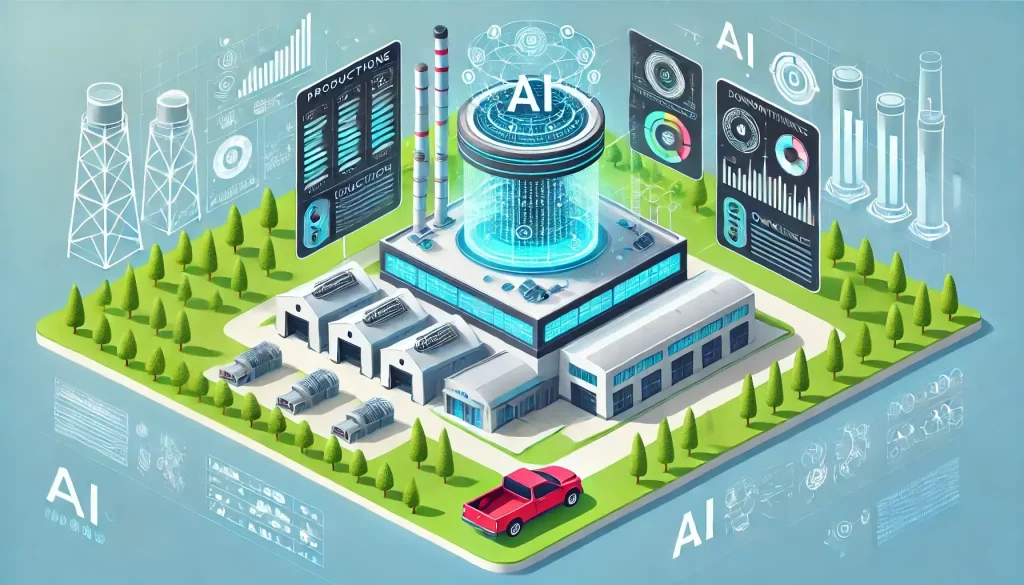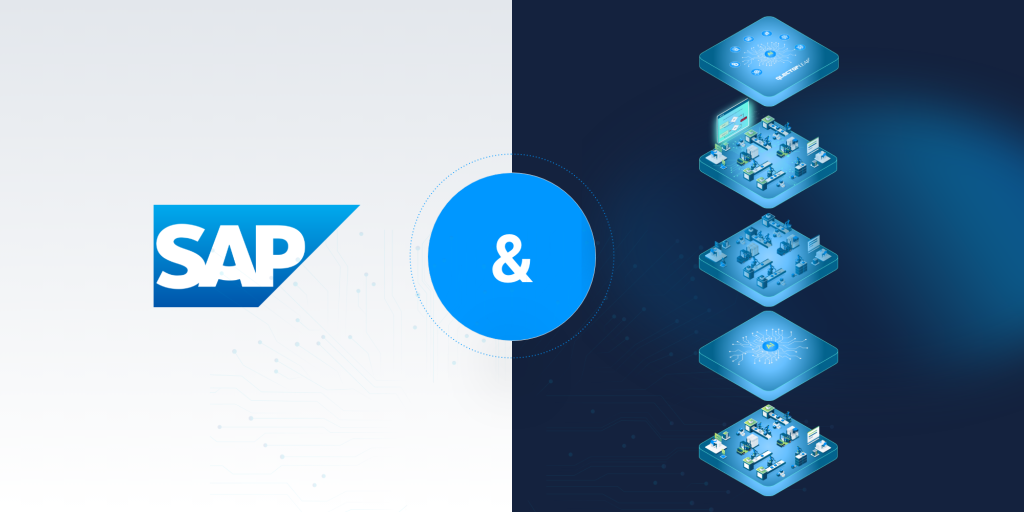AI is a hot topic in manufacturing, but it’s easy to get lost in the buzzwords or even easier to wonder, ‘What’s in it for me?’ Although many production planners have likely experimented with ChatGPT or similar tools powered by Large Language Models (LLMs), they often aren’t sure how this kind of technology can be optimally integrated into their daily routine.
Cutting Through the Hype
In this blog, we break down the three key technologies that are reshaping production planning – making sense of the buzzwords to boost clarity and efficiency. Why exactly are LLMs, Machine Learning, and AI Agents important for shop floor operations and how can they actually support your day-to-day work?
LLMs for Smarter Communication
Large Language Models (LLMs), such as ChatGPT, are AI tools designed to understand and generate human-like language. While not developed specifically for manufacturing, they offer surprising value when embedded into the planning process.
So, what exactly can LLMs do for production planning?
• They are ideal for generating clear documentation and updates – everything from Sales & Operations Plans to progress reports.
• They can streamline communication across teams, support the creation of status updates and meeting summaries, and extract and summarize information from large data sources.
• Support from LLMs leads to informed decision-making, which is especially important in rapidly shifting production timelines.
Pros and Cons of LLMs in Production Planning
✅ Pros
• Saves time on documentation and communication.
• Improves cross-team communication by summarizing complex info.
• Simplifies insight extraction multiple text sources.
❌ Cons
• Requires large volumes of high-quality, domain-specific data.
• Can occasionally generate incorrect or misleading outputs.
• Customizing it for specific industries can be costly.
Machine Learning (ML) for Smarter Decisions
Machine Learning (ML) focuses on analyzing historical and real-time data and identifying patterns to support data-driven decisions. ML-driven insights help planners fine-tune resource allocation, and in production planning, they are particularly useful for:
• Forecasting demand based on historical and real-time data, helping planners align production more effectively.
• Optimizing inventory to prevent overstocking or shortages.
• Improving scheduling by identifying the most efficient workflows.
• Enabling predictive maintenance, quality control, and tool preparation to enhance operational efficiency and reduce downtime.
Pros and Cons of ML in Production Planning
✅ Pros
• Helps identify patterns in production and demand data.
• Proven success in improving efficiency and reducing costs.
• Faster to train for specialized tasks using structured historical datasets.
❌ Cons
• Can be complex and hard to interpret (black box effect).
• Needs up-to-date, well-labeled data to work effectively.
• Less natural for generating human-readable insights or instructions.
The Role (and Rise) of AI Agents
AI Agents represent the next evolution in intelligent manufacturing. Rather than choosing between LLMs and ML, AI Agents combine the strengths of both to:
• Merge real-time production insights (ML) with readable summaries and documentation (LLMs).
• Automate repetitive planning tasks, freeing planners to focus on strategic work.
• Detect anomalies in scheduling and workflows, enabling quick human intervention.
• Reduce downtime or bottlenecks by Continuously analyzing production workflows.
The Power of Combining
When it comes to advanced production planning and scheduling, no single technology holds all the answers. Only by combining them can manufacturing companies unlock their real impact.
LLMs help streamline communication and documentation, ensuring clarity across teams, while ML excels at forecasting, scheduling, and optimizing operations through data-driven insights. AI Agents bring these capabilities together, enabling planners to work more intelligently by automating tasks, surfacing key information, and adapting in real time.
By combining LLMs, ML, and AI Agents, production planners can address challenges faster, maintain tighter control over resources, and keep schedules on track – especially in a fast-moving manufacturing environment.
Leading the Shift, Not Watching It
At QLECTOR, we’re not just observing this shift—we’re actively building it. Our roadmap reflects this convergence of technologies, and our solutions already help manufacturers make smarter, faster planning decisions.
Discover What AI Can Do for Your Factory
Explore QLECTOR Leap or Contact Us to learn how AI-powered production planning and scheduling can support your production goals.












